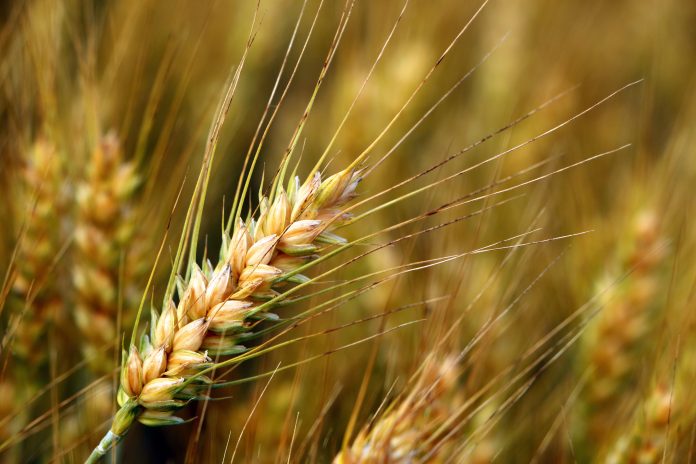Aarthi Janakiraman, Research Manager, Chemicals and Advanced Materials at TechVision, Frost & Sullivan, provides further insight into crops, focussing on wheat, the demand of which is set to increase by at least 50% before 2050
Wheat, at present, is not only one of the most cultivated crops, but also the most consumed one globally. It has become a staple in the diet of people across many countries. With the demand for wheat set to increase by at least 50% before 2050, global economies are focusing on increasing crop yield and production. Countries have initiated long-term plans to improve yield, address challenges faced by cultivators at ground level to ensure the optimum yield. Focus is also placed on developing disease-resistant varieties, those that can be cultivated in harsh climates and have an increased survival rate. Another main challenge to address is to protect yield potential from both biotic and abiotic stress factors while ensuring sustainability.
There has been a rise in cooperation agreements between countries to intensify joint research activities to facilitate the above-mentioned areas. The intent for partnerships between the International Maize and Wheat Improvement Center (CIMMYT) in Mexico and institutes, such as the Julius Kühn-Institut (JKI) in Germany and the Jiangsu Academy of Agricultural Sciences (JAAS) in China, aim to increase joint research on disease-resistant and stress-tolerant wheat and open a new screening facility for Fusarium head blight (FHB) are examples of increasing focus towards global partnerships and cooperative agreements.
Focus on genomic selection: Need of the hour
Current widespread practices for improving yield are inclined towards improving tillage, optimising the use of nitrogen fertilizers, herbicides, manure and fungicides. However, with the tightening regulations with respect to the use of fungicides and fertilizers-and the anticipated increase in demand – has made it imperative to hasten the research and development (R&D) focus on improving productivity and yield quality.
Breeding programmes have already been implemented by various research institutes and companies, with genetic gain in yield and quality being the two main focal points of the programmes. However, the success rate of these programmes is dependent on the evaluation of the resultant genotypes as much as the choice of crosses made using the “parent” strains. While the current breeding programmes can address the current requirement, they still need to be revamped to ensure future requirements are met.
Genomic selection can be used to further facilitate accurate selection of traits, reduce cycle and harvest time and accelerate much-needed traits. However, in the current scenario, practical implementation is still in the nascent stages. Lack of information related to comprehensive assessment of genomic predictabilities of various traits that breeders and cultivators look and high cost are key constraints to the large-scale implementation of genomic selection in R&D programmes. However, results from the studies and global trials carried out by institutes such as the International Maize and Wheat Improvement Center (CIMMYT) on wheat phenotypes along with the International Wheat Genome Sequencing Consortium’s reference sequence (RefSeq v.1.0) 19 on bread wheat can act as a roadmap for ongoing and future research efforts.
A research study by Senapati et al, from the Department of Plant Sciences, Rothamsted Research, UK specifies that knowledge in crop ideotypes designed in accordance to crop physiology and assessment of their performances in a targeted environment can possibly help in breeding crops for high yield potential under climate change. Another collaborative effort between the researchers of the SDSU Department of Biology and Microbiology and Iowa State in the U.S. highlighted the probable use of CRISPR editing tools to regulate or allow a knockout negatively regulating gene that controls grain size and weight in bread wheat, using the rice genome as a model.
Transgenic crops: Can it become a reality?
There is also an increasing focus on the development of transgenic crops that can probably mitigate abiotic stress factors and its adverse impact on yield quality and productivity. While many experts realise the potential of the crops in improving productivity, there is still no clear timeline that can be envisaged for its commercialisation. The key bottleneck is the inability to transfer the successful trials from controlled environments to fields. Most of the transgenic research is focused on the betterment of a single quality; this adversely affects the success rates in fields as various environmental factors come into consideration.
Therefore, careful selection of genes and agronomic and climate conditions are necessary. Also, careful consideration of the fact that there might be a potential variation of transgene during field trials should be kept in mind while designing breeding programmes. With careful evaluation of genotypes in both pre-breeding and breeding programmes, and accounting for the influence of both biotic and abiotic factors, these factors can help in increasing the success rates of transgenic research, especially for the development of disease and drought-resistant varieties and increasing grain growth rates. Use of Big Data coupled with remote sensing data can help achieve this and also promote precision agriculture practices and effective site management.
Final word
Integrated approaches towards continuous monitoring of productivity and yield across fields and predicting year-to-year variability can help in gathering data and ensuring successful trials and potentially reduce commercialisation barriers.
Coordinated international cooperation and research between stakeholders across the value chain can go a long way in ensuring the success of ongoing and future research activities, paving the way for smoother field trials, better deployment of integral approaches to yield mapping and assessment while bridging the gap of information dissemination between cultivators and other stakeholders.
Acknowledgement
I thank the TechVision Group at Frost & Sullivan who helped in providing insights for this article.
References
Araus et al, Transgenic solutions to increase yield and stability in wheat: shining hope or flash in the pan?, Journal of Experimental Botany, Vol. 70, No. 5 pp. 1419–1424, 2019.
Philomin Juliana et al, Improving grain yield, stress resilience and quality of bread wheat using large-scale genomics, Nature Genetics, VOL 51 1530, October 2019, 1530–1539.
Toscano et al, A Precision Agriculture Approach for Durum Wheat Yield Assessment Using Remote Sensing Data and Yield Mapping, Agronomy 2019, 9(8), 437; https://doi.org/10.3390/agronomy9080437.
Ricroch, Agnès & Harwood, Wendy & Svobodová, Zdeňka & Sagi, Laszlo & Hundleby, Penelope & Badea, Elena & Rosca, Ioan & Cruz, Gabriela & Fevereiro, Pedro & Riera, Victoria & Jansson, Stefan & Morandini, Piero & Bojinov, Bojin & Çetiner, Selim & Custers, René & Schrader, Uwe & Jacobsen, Hans-Joerg & Martin-Laffon, Jacqueline & Boisron, Audrey & Kuntz, Marcel. (2015). Challenges facing European agriculture and possible biotechnological solutions. Critical Reviews in Biotechnology. Early Online. Early Online: 1–9. 10.3109/07388551.2015.1055707.











